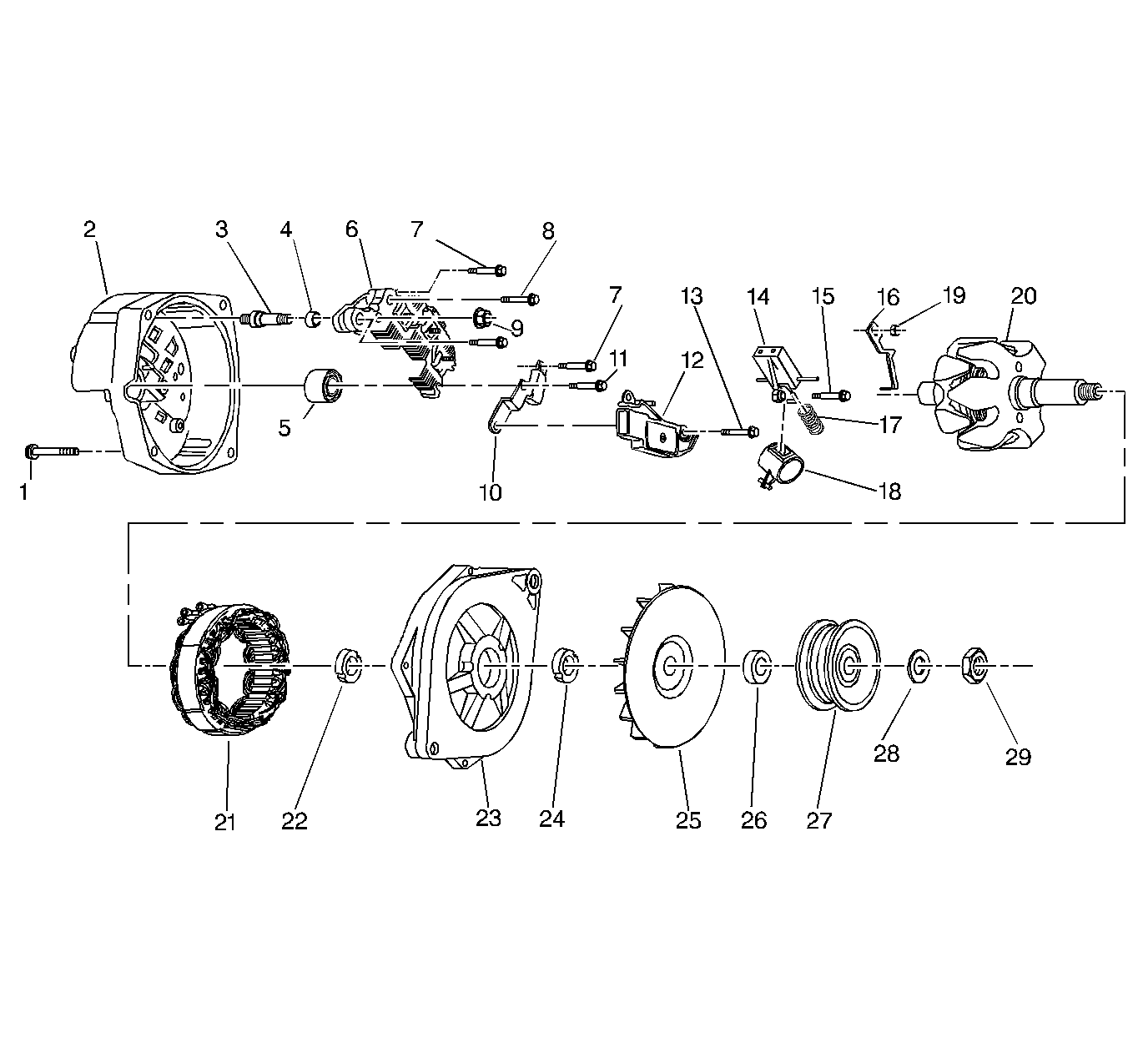Use of the P, I, and S terminals is optional. The generator only needs
the following two connections:
The P terminal is connected to the stator and may be used with a tachometer
or other external device. The I terminal may be connected directly to battery
voltage in order to power the generator. In this case, the L terminal would
be stepped down. The S terminal may be connected to an external voltage source
for voltage control. If the S terminal is not used, internal generator voltage
is used for control.

